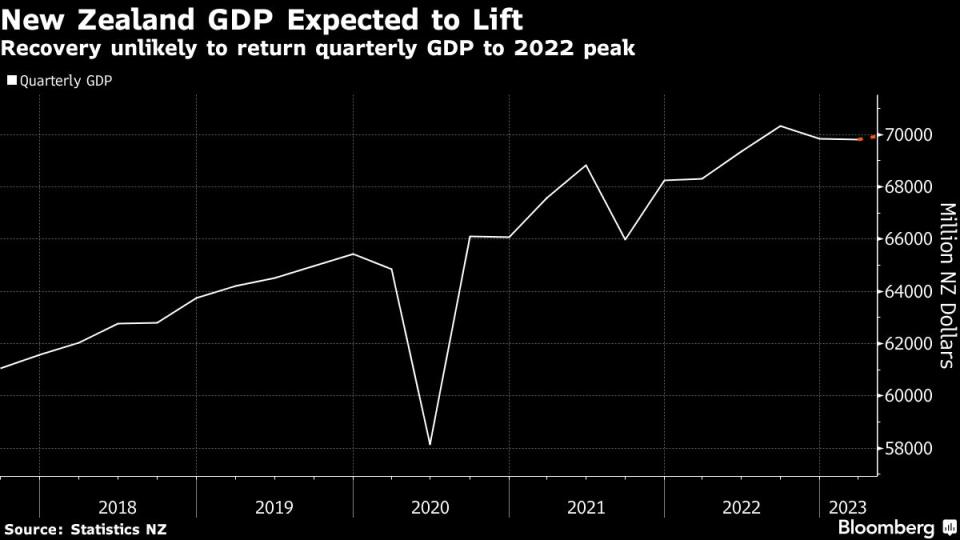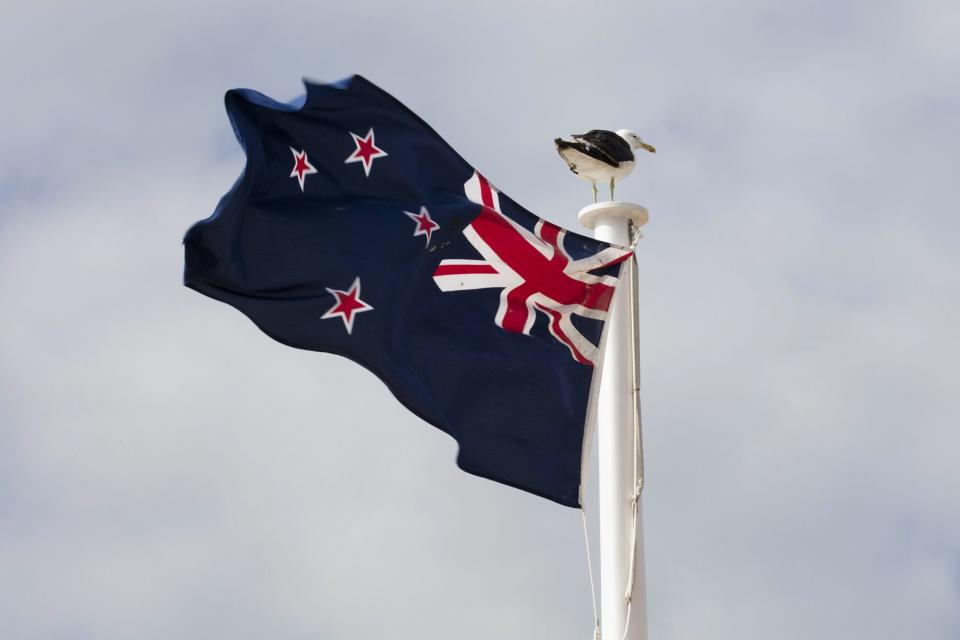New Zealand Seen Emerging From Recession as Next Slowdown Looms
(Bloomberg) -- New Zealand’s economy probably emerged from a shallow recession in the second quarter as a surge in immigration fueled growth.
Most Read from Bloomberg
Vegas’ Newest Resort Is a $3.7 Billion Palace, 23 Years in the Making
Fed Set to Pause Rate Hikes, But Don’t Count Out Another Increase
Dollar Rally Is Crushing One of the Most Popular Trades of 2023
Gross domestic product increased 0.4% in the three months through June, according to the median estimate in a Bloomberg survey of economists. From a year earlier, the economy expanded 1.2%, the survey shows. Statistics New Zealand publishes the report at 10:45 a.m. Thursday in Wellington.
After contractions in the fourth quarter of 2022 and the first three months of 2023, evidence of growth will be welcomed by Prime Minister Chris Hipkins, who is behind in opinion polls less than four weeks from an election. Still, some analysts anticipate the economy will tip into a double-dip recession before the end of the year in the face of high interest rates and falling prices for milk and other exports.
“Policy settings have been aggressively tightened and the global backdrop is weakening, especially as China’s post-Covid recovery is losing steam,” said Jarrod Kerr, chief economist at Kiwibank in Auckland. “Against such a backdrop, our base case still involves New Zealand slipping into a recession later this year.”
Wide Range
The statistics agency is reviewing its seasonal adjustment of the GDP series and could revise the first-quarter decline of 0.1%. The review also makes the quarterly growth figures harder to predict. Forecasts in the Bloomberg survey ranged from 0.8% growth to a 0.4% contraction in the second quarter.
In August, the Reserve Bank forecast the economy would return to growth in the three months through June before shrinking again in the third and fourth quarters. By contrast, the Treasury Department last week projected it will keep expanding into next year.
Read More: New Zealand Treasury at Odds With RBNZ Over Second Recession
In the second quarter, economic growth was aided by the recovery from Cyclone Gabrielle and other severe weather events that hit the nation’s North Island in the first three months of the year. Late season pasture growth also boosted farm output, and there were signs of a lift in the services industry including real estate activity, economists said.
Still, residential construction declined in the quarter and manufacturing was sluggish. Retail sales volumes fell more than expected as high borrowing costs curbed household spending.
Immigration is providing a boost to the economy. The nation added a record net 92,600 people in the year through June, and that is stimulating demand for rental properties and homes. The Treasury said the extra demand is a reason it doesn’t see another recession ahead.
New Zealand’s population grew an estimated 0.6% in the second quarter, outstripping economists’ median GDP expectation and suggesting per capita growth may have slowed for a third straight quarter.
“A weak underbelly is expected to be particularly evident in the per capita data, which is expected to post another quarterly contraction,” said Miles Workman, senior economist at ANZ Bank New Zealand in Wellington. “In annual growth terms, the widening gap between headline and per capita growth shows New Zealand is back to its pre-pandemic trick of population growth bolstering growth in headline GDP.”
Most Read from Bloomberg Businessweek
©2023 Bloomberg L.P.



